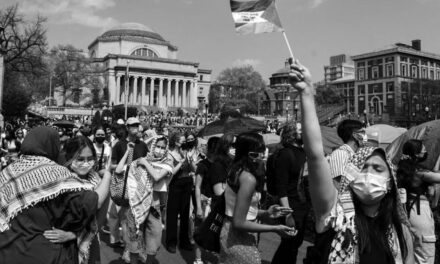
The Numbers Are In: Over 300,000 Fled NYC During COVID

With enough time having passed since the start of the pandemic, we can now start to analyze the effects of the mass exodus from New York City.
NYC has reported a net loss in residents moving to other states for more than five decades, but international immigration and a strong birth rate maintained an increase in overall population. Historically, people moving into the city earned about the same amount of money as those who left.
This all changed between 2020 and 2021, when more than 300,000 NYC residents either perished or left. Brooklyn saw the largest exodus out of all NYC neighborhoods.
Tax filings from 2019 show that the group of residents to flee NYC during COVID-19 earned roughly $21 billion annually – that’s twice as much as those who moved out of the city over the past decade and 28% more than individuals who moved out a year before the pandemic.
As noted in a New York Times report that politely avoids criticizing former NYC Mayor Bill DeBlasio, the Big Apple depends heavily on its wealthiest residents to fund public programs including schools and law enforcement.
The city’s top 1% of earners represented 41% of NYC’s total personal income in 2019 and it is unclear how the departure of so many of these individuals will impact the city.
Experts are unable to fully calculate the amount of tax revenue lost because many of those who left NYC continue to work remotely for companies based in New York. If this trend continues, we can expect legal fights between states over taxes.
NYC’s department of city planning is confident the population will recover fully by the end of 2022, but others aren’t so sure.
“We don’t know what this means permanently, but things have shifted in a way that should give anybody looking at this some serious pause,” warns Andrew Rein, president of fiscal watchdog organization Citizens Budget Commission.
Other factors at play in NYC’s population loss include a steep drop in international immigration (numbers are down to one-fourth of pre-pandemic levels), a higher-than-average death rate, and a lower-than-average birth rate. The unemployment rate in NYC remains disproportionally high – roughly double the national average – and the city still has 61,000 fewer leisure and hospitality jobs available compared to 2019.
“I love New York City, but it’s been a challenging time,” says Sam Williamson, a 51-year-old defense lawyer who recently moved to Miami, FL. “I didn’t feel like the city handled the pandemic very well.”
Other residents who moved away said the pandemic exacerbated the downsides of city life – including small living spaces, crowded streets, and delays in trash collection.
Florida, California, and Colorado were among the most popular destinations for people leaving NYC. The Sunshine State absorbed a whopping 21,000 New Yorkers in 2020 as business HQs moved there and residents sought warmer climates.
“My mind-set was, Florida’s more lenient on COVID, and there’s going to be less regulation,” said Zak Jacoby, who worked as a bar manager on the Lower East Side before relocating to Florida in 2021.
Others moved to less-crowded areas in upstate New York, driving population increases in 16 counties with Sullivan and Orange Counties reporting the highest number of new arrivals.
Many of those who left also cited increasing crime and homelessness as reasons they no longer wanted to live in NYC. Polls suggest 70% of current residents have faith the city will improve, but many are demanding that elected officials be held responsible for COVID-era mistakes.
Overall, the pandemic cost New York State an estimated 1.8% of its population and NYC nearly 4%. NYC reached a peak population of 8.8 million before the pandemic and now has an estimated population of 8.5 million, though census data from 2020 is said to be off by up to 1 million.
Sources:
The Flight of New York City’s Wealthy Was a Once-in-a-Century Shock
Pandemic prompted exodus from New York City, gains upstate
NYC’s Population Plummeted During Peak COVID – And It’s Still Likely Shrinking
Study: Many NYC workers considering leaving over crime levels



























More freedom away from New York
Many people moved to New York City or stayed there because of the available jobs. Since many of these jobs can be done remotely, a lot of qualified workers have physically relocated elsewhere, but continue to “work” in the city. This brings up interesting questions about taxation. Since local and state taxes are to be used to provide services for people and businesses physically located in the area, why do remote workers have to pay taxes in a city or state in which they don’t live, and may never even visit? They don’t need trash pickup, roads repaired, or police and fire services at their remote job locations, so why should that community get any of their tax money?
Perhaps for the same reason that these people don’t pay income taxes in the state they are residing in when working remotely in another state. An artifact of the pre-internet age, perhaps this should be changed for the new world, but the complexity of parsing taxes based on services utilization is complex and would need agreement on a reciprocal basis across the country. Certainly the state the work is done in deserves income tax dollars, there are services provided and they are forgoing any state taxes outside of income. But the state you reside in probably supplies more services yet receives all state taxes beyond income so many services are already covered.
But the best would be moving from an income tax state to a no income tax state. Now you will still pay income tax to the original state you are now remote from, but will still pay all those other taxes in the state you are living in which are probably quite a bit higher than the state you are working from which has income taxes. IOW — workers who remotely work from an income-tax-state to a non-income-tax state stand an odds-on chance of having a higher overall state tax burden that they used to. How we gonna solve that one?
May be easer to make all taxes federal and then apportion to the states from there and then we can bitch about NY getting more than MI. That sounds impossible too.
It’s a mess and will only get worse.